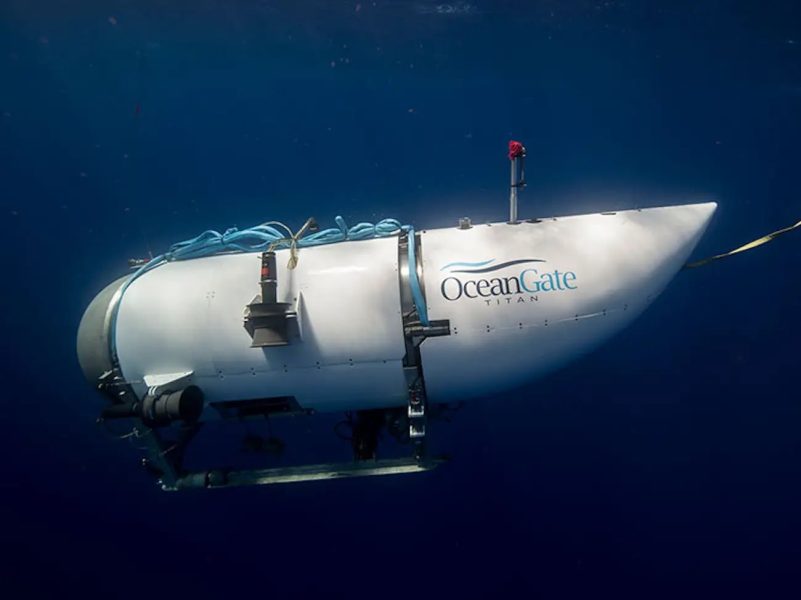
Explained: Why does a submarine implode and what follows?

The US Coast Guard on Friday (June 23) confirmed that the deep-sea exploration mini-submarine – Titan, had imploded some 1600 metres away from the wreckage of the Titanic.
The catastrophic incident claimed the lives of five people.
Hamish Harding, a British aviator, along with Paul-Henri Nargeolet, a French explorer, Shahzada Dawood, a British-Pakistani businessman, his son Suleman Dawood, and Stockton Rush, the CEO of OceanGate, had embarked on a deep-sea expedition to explore the remains of the Titanic ship.
Sadly, all of them perished in the purported implosion.
Also Read: Search for Titan submersible | Pilot, crew believed to be dead: Expedition company
The vessel had lost communication with its mother ship on Sunday (June 18) in the morning at around 9:45 am, leading to various international teams being dispatched to scour the area with planes, ships and deep-sea unmanned vessels, hoping that they would find the stricken mini-submarine.

The tragic fate of the Titan and its crew serves as a stark reminder of the perils associated with deep-sea exploration, even in this age of advanced technology and safety measures.
Challenges of the deep
As the search and rescue expedition went deeper into the ocean’s abyss, the challenges rose significantly, with the immense pressure, total darkness, and expansive search area adding to the complexity of the mission.
It is not clear as to the status of the submersible when it lost contact, but was designed to carry five people to a depth of 4000 meters (13,120 feet).
At depths exceeding 800 feet, the pressure experienced underwater reaches approximately 80 times the atmospheric pressure at the surface. This immense water pressure poses a huge challenge for any exploratory activities or human presence in deep-sea environments.
Also Read: James Cameron on Titan submersible tragedy: I’m struck by the similarity of Titanic disaster itself
What is a submarine implosion?
A submarine implosion occurs when the vessel goes beyond its stipulated dive depth. The extreme pressure caused by the water becomes too much for the vessel’s superstructure to handle, which in turn crushes the vessel. For a better idea, try crushing a soft-drink or a soda can in your hand to understand what happens.
What makes a submarine or submersible implode?
When a submarine or submersible goes beyond its crush depth, implosion is inevitable. This is caused by the overwhelming water pressure exceeding the hull’s capacity to withstand it. Design deficiencies, equipment failures, or human mistakes can lead to such a situation.
What happens to the human body at this depth?
The exact details are still not known, but the extreme water pressure and the change in pressure can cause air-filled spaces within the body, such as the lungs and sinuses, to collapse under the immense pressure, which can cause severe injury or even be fatal.
Besides this, rapid changes in pressure during ascent can result in decompression sickness, commonly known as bends. This is a situation where dissolved gases in the body’s bloodstream form bubbles and can cause serious health issues.
Also Watch: Submersible on Titanic expedition goes missing, search underway
Another issue is nitrogen narcosis — a condition that affects divers at deep depths and can impair cognitive function. It is comparable to being under the influence of alcohol.
Oxygen toxicity is another concern, as exposure to high levels of oxygen under certain conditions can lead to seizures or other harmful repercussions.
Finally, the extremely cold temperatures in deep-sea environments can potentially cause hypothermia.
What if a submersible explodes at 13,00 ft below the sea?
As the under-water pressure is significantly higher than atmospheric pressure, the consequences of an implosion or breach of a submersible would be devastating.
The sudden and immediate change in pressure can make the air inside the submarine to rapidly compress, leading to a spike in temperature which may cause severe burns or other thermal injuries to people within the submersible.
During an implosion at extreme depths, the fate of individuals inside a submarine would be certainly be immediate death. The intense compression forces and the shockwave generated by the implosion would allow no chance for survival.
Will a person inside an imploding submersible feel pain?
Highly unlikely. As the implosion would be immediate and extremely powerful, death will be instant and most likely painless.

